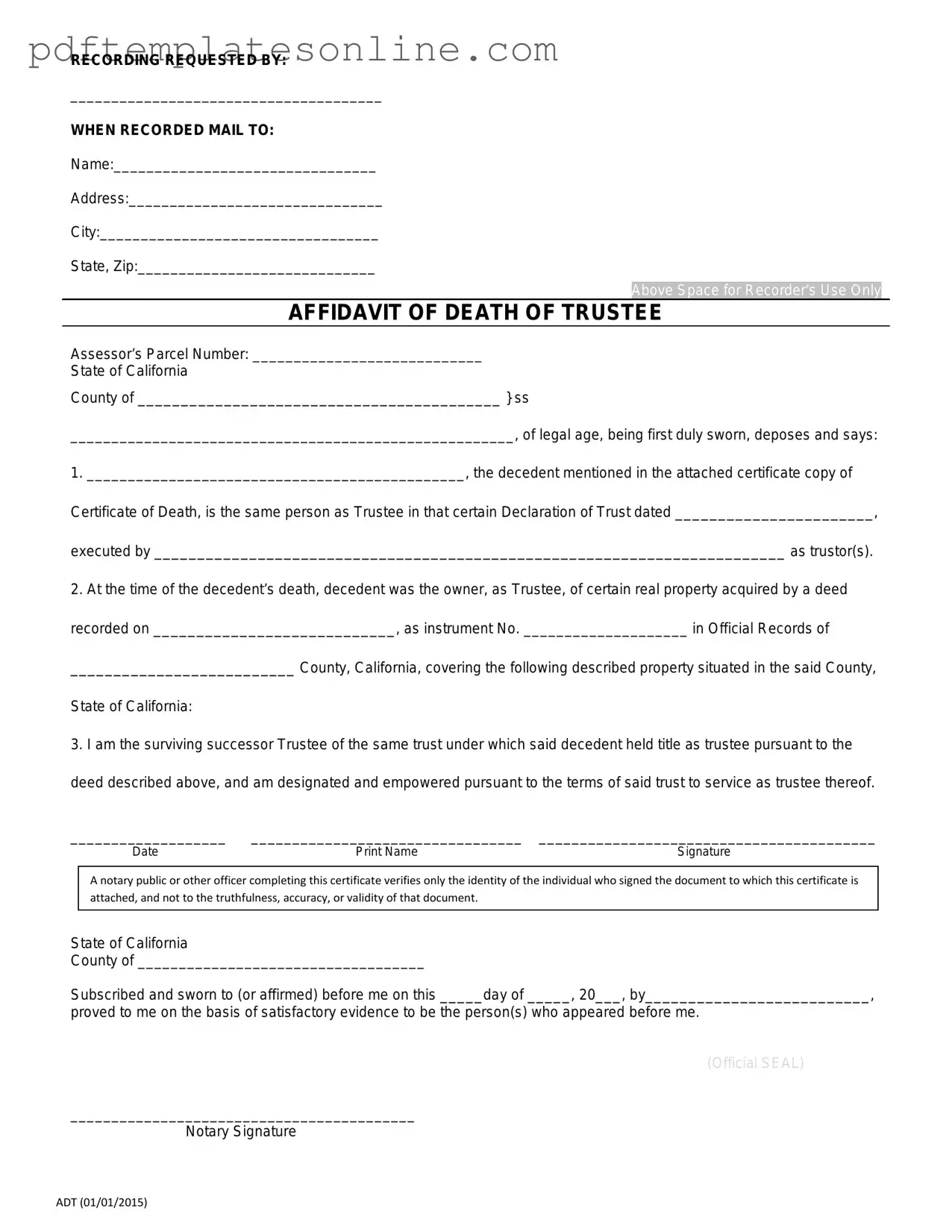Blank California Affidavit of Death of a Trustee Form
The California Affidavit of Death of a Trustee form is a legal document used to officially declare the death of a trustee who managed a trust. This form serves to inform beneficiaries and other interested parties about the change in trust management. Understanding this process is essential for ensuring the smooth transition of trust responsibilities and protecting the interests of all parties involved.
Access California Affidavit of Death of a Trustee Editor Now
